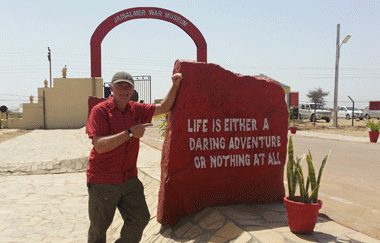


The ascent of La Torrecilla
La Torrecilla (meaning small tower) is the highest mountain in Western Andalucía at 1919m, and has outstanding views. It is very popular being found half way between Marbella and Ronda. Leave early, as it a fairly long walk, of 16km and ascent of 840m.
After spending five days walking near Grazalema, we had stayed near Ronda the night before, leaving in the dark, before eating a large breakfast of coffee and toast at Rincon Taurino Garage Agio on the A397 San Pedro road. We always call into cafes in Spain, the ones off the beaten track are usually fascinating. This one was no exception with large groups of men looking like they were going hunting, drinking something like schnapps and walls covered in bull fighting pictures.
Our starting point the car park at Area Recreativa de los Quejigales is sign posted off the main road near the cafe. The wide gravel road passes a couple of small car parks, then after about 20 minutes or 6.7km a barrier on the road is reached at the entrance to the Sierra National Park. Between June and mid-October the barrier blocks vehicle access adding an extra 2.8km to and from the start point. We were lucky as it was October 15th, and the barrier was open. Ten minutes later we arrived at our large free car park. By 9am there were already ten cars in the car park with more arriving all the time.
We took the opposite exit out of the car park from where we had arrived, walking up the road for about 200m, before turning right over the wooden bridge passing an information board, and following marker signs through the fir trees. This is a relatively easy and beautiful path, with green and white marker posts to follow. The mountains of Grazalema where we had been all week, can be glimpsed through gaps in the trees, which provide some lovely shade.
After an hour we reached the top of the ridge, Puerto de Los Pilones 1750m, turning left to join a track towards the antennas, with views to Ronda, Grazalema, and south to the Mediterranean with hazy views on the horizon. Turning right before the antennas the path follows more green and white posts. The national park team have been doing a lot of work replanting trees and placing bags of stones to prevent erosion. After a further 20 minutes walking, spot the large ice hollow to left of path with a rail round. There are numerous ice pits in the area, winter snows were trampled underfoot and covered with earth and branches to prevent melting. The blocks of ice were then wrapped in sacking and carried on mules to major towns in the area. Interestingly there was frost on the ground here in the shade, so obviously a good spot for ice making.
Around the corner from the ice cave the path splits. If you decide not to walk up La Torrecilla a left turn can be taken here to return to the car park a different way. We went right following more signs. It was a lovely path, and always good to see lots of people out walking too, this being a Saturday. Two hours after leaving the car we rounded a corner to Pilar de Tolox, which is a trough carved out of blocks of limestone, containing a fountain, with a sign saying non-drinking water. The trough is said to date back to Roman times, when flocks of animals were moved to summer pastures. Two modern shrines have been placed in the caves here. This makes a popular location to stop before the final ascent is made. Some people stayed here instead of going to the top.
The hardest part of the day now starts. The path zigzags all the way to the top, with markers to follow. But the whole side of the mountain seems to be a path. Thirty-five minutes after the fountain we were very happy to reach the top of La Torrecilla (1919m). There is a plaque and a shrine with prayer flags. Now we know why this is such a popular walk with tremendous views in all directions. We stayed at the top for at least an hour just enjoying the huge expanse all around us with views to the peaks of Grazalema already summated this week, and our next outing La Maroma beyond Malaga, as well as many whitewashed villages, the coast, La Concha etc. On a clearer day Gibraltar and the coast of Morocco could be seen. It was a warm day, but an extra layer was needed at the top due to the wind blowing.
We left the top at 1.15pm with more people arriving all the time, creating a bit of a holiday atmosphere. It was fairly difficult going down the zigzags as the path is very steep, so we used sticks for balance (something we always take with us, but very rarely use). Arriving back at the fountain at 1.50pm, we then continued back to the split in the path at 3pm. We went left back to the ice cave, then took the path to the right of it, going up the rocks to a trig point, turning right down a slightly overgrown path with cairns, through the trees. Take some time to admire the Spanish Firs and Portuguese Oaks, some are hundreds of years old, reaching way up to the sky, some are dead, giving atmosphere. It would be spooky here at dusk. The forests here were used for hundreds of years for ship-building and charcoal burning. After an hour of walking we were treated to views to the west and entered a clearing. Here the path did not seem to exist, but we headed straight ahead cutting across the grass towards a rough road at an erosion barrier. Following the road we descended through the trees past the wooden bridge and arrived back in the car park at 4.40pm.
We really enjoyed this walk, none of it was too hard. We took our time, enjoying the views, chatting to fellow walkers and eating our picnic. We would definitely walk this mountain again, and may go back down the way we had come up another time. Whilst in Spain check out the Empanadas, Spain's walking version of pork pies.
Distance 10.41 miles (16.7km)
Duration of Walk 7 Hours 45 Mins
Average Pace 45 Min/Mile
Steps 40370
Elevation Gained 2762 feet (841m)
Information/Advice
Take a phone and charger, sun hats, sun tan lotion and some food and water as after leaving the start there is nowhere to replenish supplies. It can also be chilly on the top, especially if windy or the clouds roll in, so take a wind proof jacket and woolly hat. I would advise taking a compass too in case you lose your way, insect spray, and maybe a Spanish phrase book.
Wear boots, the only way to go, we wear Lowa boots, originally designed in Germany, and very popular with walkers there. Having worn out previous pairs, with an excess of 1,000 miles walked in them, we are now on our third pairs. They are available from Lowa on-line, in Decathlon, and probably other places too.
What we noticed on this walk was the Spanish all seemed to wear the equivalent of jogging kits with trainers, carrying very small pouches with just some sports drink, compared to us wearing big boots and carrying large rucksacks-we felt like walkers in the Alps from the 1950s and felt very out of place. I think we are used to the variables of the English weather ,so are used to taking all kit with us.
A word of advice though ensure you take maps and walking books with you, as none in English seem to be are available in Spain.
The problem with rocky terrain is that it would be fairly easy to fall, and damage something, and there is little mobile phone signal. I imagine that there is no mountain rescue service-the civil guard may come out-or may charge. So take care.
Being located in southern Spain, I would advise not doing this walk in the summer months as it would be far too hot, and would require carrying too much water.
Check the weather forecast before setting off, as it would be a shame to walk all this way and have no view.
Go when the barrier is open like we did for a shorter walk. The barrier seems to be shut between June 1st and mid-October.
We try and use public transport when in Spain, being cheap and plentiful, or walk. But this area is fairly inaccessible by public transport, so we had hired a car in advance.
This area of Southern Spain can be reached from England either by driving through France and Spain, or flying to Malaga then hiring a car or catching the reliable, cheap public transport.
Websites used
https://www.lowa.co.uk/
www.bookings Hotel Posada de Ronda where we stayed the night before
http://www.parauta.es/11714/pension-hostal-el-rincon-taurino breakfast
Resources Used
Walking the Mountains of Ronda and Grazalema Walk 5 La Torrecilla Circuit by Guy Hunter-Davies. Cicerone press. This series can be bought in England